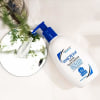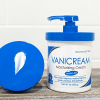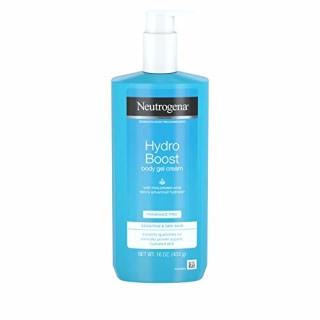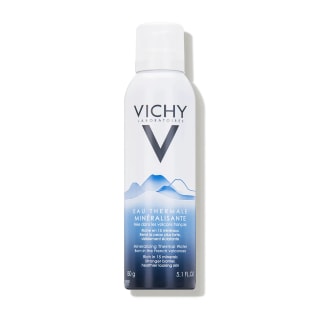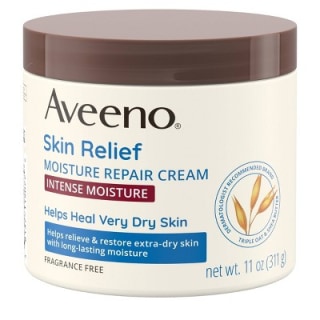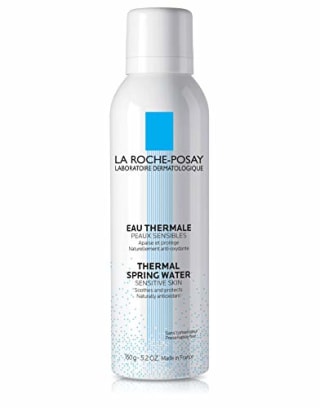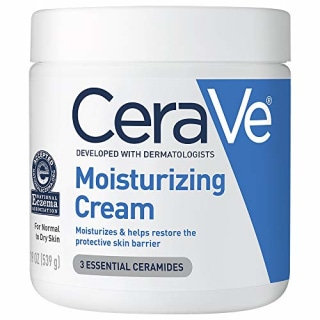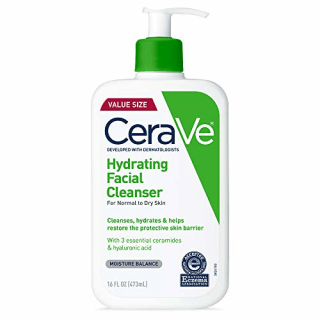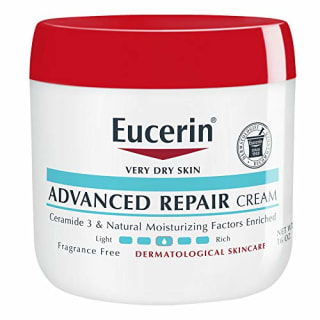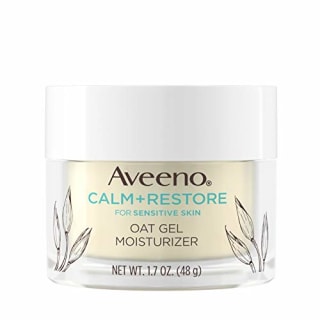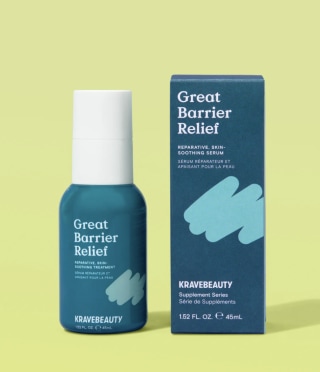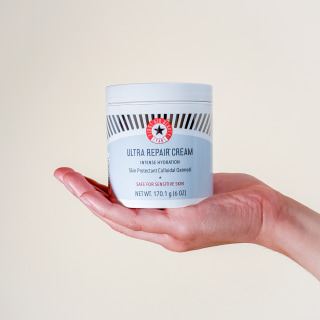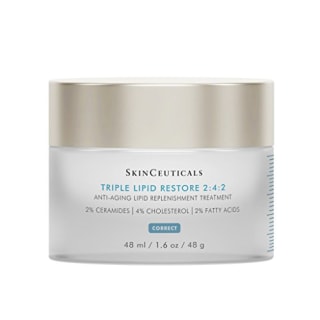Between wearing makeup, days spent laying in the sun and everything that comes in between, we put our skin through a lot. It's no surprise that there are effects we can't see, particularly when it comes to skin barrier damage.
Shop TODAY spoke to a few dermatologists about what exactly the skin barrier is, how we can avoid damage and, if the damage has already occurred, how to repair it.
How to avoid damage | How to repair it | Expert-recommended products | How we chose | Meet the experts
How to avoid damage to the skin barrier
"The key is [to try to] do no harm," board-certified dermatologist Dr. Mary Lupo says. She recommends washing your skin with tepid to cool water and avoiding scrubs of any kind.
If you really want to exfoliate, she offers two ways to safely do so. There's enzymatic exfoliation with things like pumpkin extract, but be sure the product doesn't have alpha hydroxy acids in it, she warns. Follow it up with a moisturizer that contains lactic acid, which she calls "exfoliative without being dehydrating."
The other way you can exfoliate is by lightly shaving your face. "It’s the same as dermaplaning and it removes the vellus hairs and...the top layer of dead keratinocytes. And there’s no chemical with it of any kind, so you’re not going to dehydrate your skin by doing that," Lupo explains.
New York City-based board-certified dermatologist Dr. Debra Jaliman recommends being very gentle with your skin by using a mild cleanser and a moisturizer and to not exfoliate too much. For your moisturizer, she advises picking one with hyaluronic acid, glycerin or ceramides.
Board-certified dermatologist Dr. Ranella Hirsch also suggests only use one active ingredient at a time. "You [should] never introduce more than one active [ingredient]," she says. Once you introduce that active ingredient into your skin care routine, it's important to make sure you're fully adjusted to it, which she says can take weeks to months.
"Realize that it’s not a contest to use the most potent version of everything or to use it for the longest period of time or whatever. The goal is to just get the effect of exfoliating that you want, but gently," she advises.
How to repair the skin barrier
Similar to avoiding damage to the skin's barrier, the first step in repairing the barrier post-damage is using a gentle cleanser. "A lot of people use exfoliating cleansers that have glycolic acid or salicylic acid. You’d want to use a cleanser that has glycerin or hyaluronic acids or ceramides," Jaliman says. Lupo shares the same recommendation, adding cholesterols to the mix which are "bad for your arteries but very good for your skin."
When picking products for your new gentle routine, Jaliman advises keeping your skin's pH in mind and choosing a product with a pH similar to your own so that you don't disrupt the balance. (The average skin pH ranges between 4 and 6.)
While you're adjusting your skin care routine and paying closer attention to ingredients, Hirsch recommends removing products with active ingredients like retinoids and alpha hydroxy acids that can irritate the skin.
"You want to take away anything that might be irritating. Then you can swap over to a gentle moisturizer because you don’t want to introduce something particularly irritating or problematic. Then, sunscreen — super, super, super gentle sunscreen is [what you want to use]."
Hirsch's most important tip? "Stop doing whatever it is you're doing that got you into this mess in the first place!"
She believes that people tend to have a "no pain, no gain" philosophy for skin care, but that's not the best approach. Similar to exercising, it's okay to have a slight adjustment period in the beginning where your skin may react differently, but if it's ongoing and painful, then you shouldn't continue doing it.
Dermatologist-recommended products to repair the skin barrier
Under $10: Vanicream Gentle Facial Cleanser
- Doesn't irritate sensitive skin
- Gentle on dry skin
- Does not work for rosacea
Size: 8 oz. | Key ingredients: Glycerin
This gentle cleanser contains glycerin and comes recommended by Jaliman. Not only is it oil- and sulfate-free, it also boasts a near-perfect five-star average on Amazon.
Super hydrating: Neutrogena Hydro Boost Body Gel Cream
- Fragrance-free
- Hydrates very dry skin
- Sticky before drying down
Size: 16 oz. | Key ingredients: Glycerin
Jaliman recommends this top-rated body gel cream from Neutrogena. It contains hyaluronic acid to help your skin retain moisture, leaving it feeling hydrated and smooth.
Simple, yet effective: Vichy Mineralizing Thermal Water
- Helps to absorb moisturizer
- Aids with microcurrent devices
- Sprayer can get clogged
Size: 5.1 oz. | Key ingredients: H2O
Lupo also offers this option for a hydrating facial mist. It contains 15 essential minerals such as calcium, potassium and magnesium to help strengthen the skin’s barrier and fight aging.
Easy to dispense: Vanicream Moisturizing Cream
- Thick, moisturizing formula
- Doesn't burn skin around eyes
- Not hydrating for flaky skin
Size: 16 oz. | Key ingredients: Petroleum jelly, sorbitol
Jaliman calls out this moisturizing cream because it contains petrolatum and simethicone, two ingredients that help seal your skin’s barrier.
Calming mist: Eau Thermale Avène Thermal Spring Water
- Calms redness in skin
- Ultrafine mist
- Small bottle size
Size: 5 oz. | Key ingredients: H2O
Lupo likes this highly-rated option that has more than 8,000 verified five-star ratings on Amazon. One reviewer even called it "magical fairy juice."
Healing formula: Aveeno Skin Relief Moisture Repair Cream
- Hydrates extra-dry skin
- Formula changed to be thinner in February
Size: 11 oz. | Key ingredients: Glycerin, petroleum jelly
Made with ceramides and a triple oat complex, this Aveeno cream is designed to provide intense moisture and help heal very dry skin. While Jaliman calls this cream out specifically, Lupo also mentions the Aveeno line of creams because the oat extracts are beta-glucans, which are natural anti-inflammatories of the skin.
Can be used as a toner: La Roche-Posay Thermal Spring Water
- Works well on acne prone skin
- Nozzle is prone to breaking
Size: 10.2 oz. | Key ingredients: H2O
They say good things come in threes, so it's only right that Lupo offers a third option for a hydrating mist. "Optimally, you want to combine hydration with water with...lipids like a ceramide," she says before recommending this spray mist that can be used as a toner replacement.
Essential ceramides: CeraVe Moisturizing Cream
- Soothes and hydrates dry skin
- Issues with packaging seal
Size: 16 oz. | Key ingredients: Glycerin, cholesterol, ceramides
Jaliman likes this cream because it has glycerin and ceramides. It’s a No. 1 bestseller in the face moisturizers category on Amazon and has over 103,000 verified five-star ratings.
A gentle wash: CeraVe Hydrating Facial Cleanser
- Removes make up and impurities
- Moisturizing face wash
- Not cruelty-free
Size: 16 oz. | Key ingredients: Glycerin
Jaliman also calls out this hydrating cleanser from CeraVe for its use of hyaluronic acid, ceramides and glycerin.
"Those [ingredients are] very gentle...so that you wouldn’t be stripping the surface oils," she says.
For "very dry skin": Eucerin Advanced Repair Cream
- Thick consistency
- Doesn't exfoliate skin
Size: 16 oz. | Key ingredients: Glycerin and urea (carbamide)
Lupo also likes Eucerin products because they contain ceramides. This advanced repair cream contains natural moisturizing factors like amino acids that are naturally found on the skin.
Calming oat gel: Aveeno Calm + Restore Oat Gel Facial Moisturizer
- Silky and lightweight formula
- Not best for oily skin
Size: 16 oz. | Key ingredients: Glycerin, oat kernel flour
Jaliman also calls out this hydrating cleanser from CeraVe for its use of hyaluronic acid, ceramides and glycerin.
“Those [ingredients are] very gentle...so that you wouldn’t be stripping the surface oils,” she says.
A "wonderful" option: Krave Beauty Great Barrier Relief
- Heals post-acne scars
- Can cause redness around eyes
Size: 1.52 oz. | Key ingredients: Niacinamide, ceramides, tamanu nut oil
Hirsch calls this restorative and reparative serum "wonderful." It's designed specifically to heal a damaged skin barrier with a blend of conditioning oils, sodium hyaluronate (a derivative of hyaluronic acid), niacinamide and squalane.
Recommended by experts: First Aid Beauty Ultra Repair Cream
- Vegan and cruelty-free
- Value for the price is great
- Can cause breakouts
Size: 6 oz. | Key ingredients: Glycerin, urea (carbamide)
Shea butter, squalane, ceramides, glycerin and colloidal oatmeal are key ingredients that make this First Aid Beauty cream a must-have, according to Jaliman and Hirsch.
Worth the price: SkinCeuticals Triple Lipid Restore 2:4:2
- Effective for aging skin
- Does include essential oils
Size: 1.6 oz. | Key ingredients: Glycerin, ceramides
While Hirsch acknowledges that this product is on the pricier side, she also calls it a "lovely, lovely product" and says it's worth the higher price point. Key ingredients of this treatment include natural cholesterol, fatty acids and pure ceramides among other vitamins and essential oils.
How we chose
In choosing the best products for damaged skin barriers, the Shop TODAY team asked three board-certified dermatologists for the best ingredients, brands and products to help heal your skin. We also searched thousands of customer reviews to see what shoppers loved about each product (and what could be improved).
Meet the experts
- Dr. Mary P. Lupo, MD, is a board-certified dermatologist and clinical professor of dermatology at Tulane University School of Medicine. She practices in New Orleans, Louisiana.
- Dr. Debra Jaliman, MD, is a board-certified dermatologist and author of the book, “Skin Rules: Trade Secrets from a Top New York Dermatologist."
- Dr. Ranella Hirsch, MD, FAAD, is a board-certified dermatologist based in Boston. Her specialties include laser surgery and cosmetic dermatology, often lecturing physicians on those topics.

